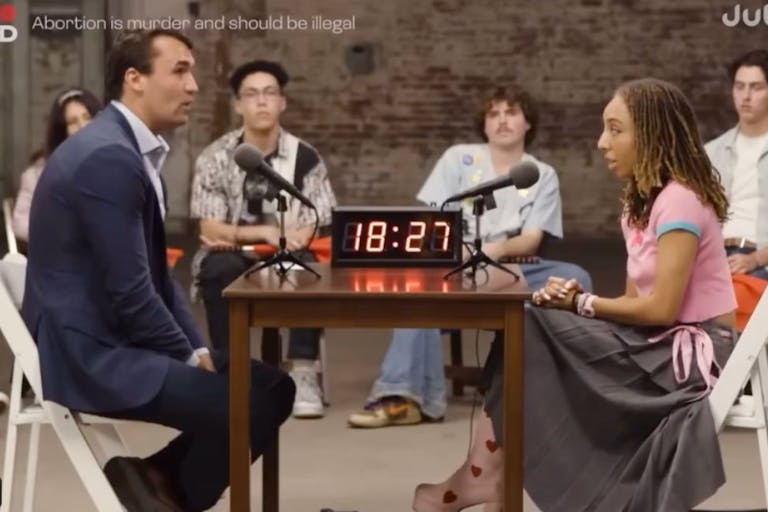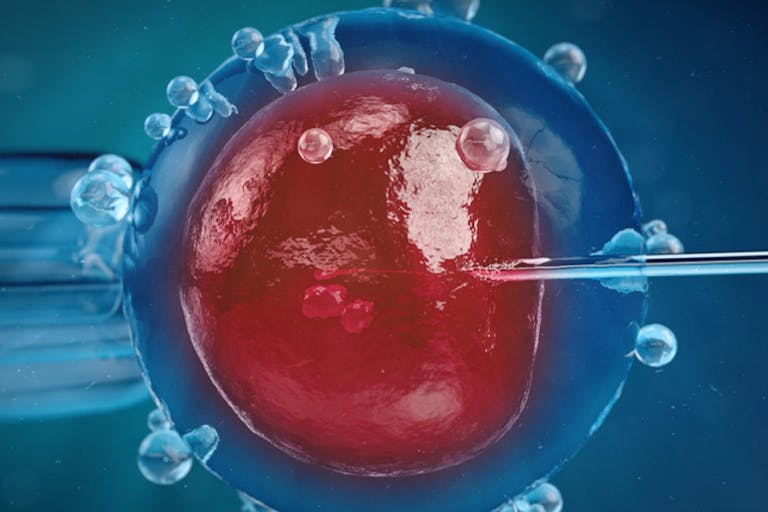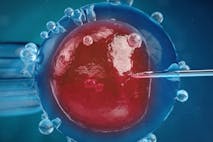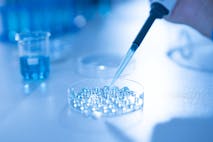oh she ate him UP im actually obsessed with her wow

Woman in viral abortion debate with Charlie Kirk left biological facts at home
Woman in viral abortion debate with Charlie Kirk left biological facts at home
A video of a debate featuring conservative activist Charlie Kirk and 25 liberal university students has gone viral — particularly one segment in which he debates a woman about abortion.
On the Jubilee YouTube channel, Kirk participated in a “Surrounded” debate; the full video currently has nearly 3.5 million views. On X (formerly known as Twitter), a shorter snippet featuring a debate about abortion has likewise been garnering thousands of views. But though the woman debating with Kirk has been applauded on social media, this applause has left many people scratching their heads, given the fact that her claims were almost entirely false.
‘Viability’ vs. ‘Alive’
The woman claimed that ‘viability’ (typically defined as the ability to survive outside the womb) is “actually 24 to 26 weeks,” after Kirk stated that it was 20 weeks, and then continued, “Okay, so under Roe v. Wade, 93% of abortions happened in the first 13 weeks of pregnancy. That’s 93% of the abortions happened well before a fetus is technically viable as a form of life.”
The woman (as we will see from her subsequent remarks) is mistakenly equating the ability to survive outside the womb at a certain gestational age with being alive.
A preborn human being is alive from the moment of fertilization. He is growing, develops a beating heart around 21 days after fertilization (which is pumping blood), develops a brain with detectable brain waves midway through the first trimester, and more — months before he is able to survive outside the womb.
Does this sound like a non-living being?

Medical advancements have allowed premature babies to survive outside the womb as young as 21 weeks — yet, ‘viability’ is an undefined, subjective point left up to the abortion provider, not simply a gestational age. Regardless, the ‘viability’ argument is irrelevant; it isn’t acceptable to intentionally kill someone even if they cannot survive without assistance in their current environment.
The woman also said most abortions are committed before 24 weeks gestation, which is true, but again is irrelevant to the question of life or when it begins. And even babies reaching so-called ‘viability’ are killed by the thousands every year.
The CDC’s most recent Abortion Surveillance Report states that one percent (1.0%) of all abortions committed in 2021 were after 21 weeks gestation. Using the Guttmacher Institute’s updated abortion numbers for 2023 (1,037,000), and the 1% of estimated abortions aft 21 weeks, this translates into an estimated 10,370 babies killed at or after a potentially survivable gestational age in just one year alone.
Does a fetus have a species?
After this discussion on viability, Kirk and the woman argued over what a fetus is, and why that definition matters.
Woman: Well, first of all, it’s not a baby, it’s a fetus.
Kirk: Well, what does fetus mean?
Woman: A fetus is in utero.
Kirk: What does fetus mean in Latin?
Woman: What the f***? I’m sorry, is this a language class?
Kirk: It means little human being.
In Latin, fetus specifically means “little one,” and scientifically, the definition is, “An unborn offspring that develops and grows inside the uterus (womb) of humans and other mammals. In humans, the fetal period begins at 9 weeks after fertilization of an egg by a sperm and ends at the time of birth.”

“Fetus” refers to a mammal during a specific period of development during pregnancy — the fetal stage; before that, the offspring is referred to as a blastocyst, zygote, and embryo. None of these terms has any bearing on the species of that offspring, because the species of the offspring is the same as the parents of that offspring. Giraffes reproduce giraffes. Elephants reproduce elephants. Humans reproduce humans. “Fetus” is simply a descriptor for a specific period in mammalian life. As far as humans go, this stage of development is one among many, like newborn, toddler, adolescent, and adult.
Despite this, the woman unscientifically claimed, “The fetus is not a species yet.”
A fetus conceived by human parents is… drumroll, please… human. Consult a biology textbook for confirmation.
Article continues below
Dear Reader,
Have you ever wanted to share the miracle of human development with little ones? Live Action is proud to present the "Baby Olivia" board book, which presents the content of Live Action's "Baby Olivia" fetal development video in a fun, new format. It's perfect for helping little minds understand the complex and beautiful process of human development in the womb.
Receive our brand new Baby Olivia board book when you give a one-time gift of $30 or more (or begin a new monthly gift of $15 or more).
Is the preborn baby a parasite?
The woman then moved on to classify a preborn human being as a “parasite” within the mother’s womb, after claiming the fetus “is not a species yet.”
“It’s technically classified as a parasite until it is viable. … A parasite is not a disease and a tumor, those are not the same thing. A parasite is defined as something that cannot survive outside of its host,” she claimed. “A baby, before it is viable, cannot survive outside of a woman’s womb. Therefore, it is not a living organism.”
As previously noted, the woman is, indeed, confusing the idea of “viability” (the ability to survive outside the womb) with being “a living organism.”
Abortion activists frequently claim that preborn children are no different from parasites, yet this is nothing short of pseudoscience. The placenta, for example, is scientific proof that a preborn child is demonstrably not a parasite. And the woman is not a “host.” She is a mother; her DNA is part of that child and helped to create that child.
A parasite is defined as “an organism that lives in or on an organism of another species” (emphasis added). A human embryo, therefore, by definition cannot be a parasite to a human adult, because they are the same species. A parasite robs the host of nutrients it needs to survive; the placenta, however, is created specifically to ensure that the two separate bodies of both mother and baby are working together, healthy and thriving, as opposed to one entity stealing from another. Furthermore, fetal cells have been found to migrate during pregnancy to heal damage to the mother’s body — helping the mother to fight heart disease and other issues.
READ: Tinder goes publicly pro-abortion with Planned Parenthood partnership, and no one is shocked
Moreover, a parasite is placed into a host’s body unwillingly, while pregnancy is a natural result of sex between a male and female. A preborn child is not a foreign invader; he or she is the natural outcome of biological reproduction and is derived from them both.
Preborn children are alive, even if they can’t live outside the womb yet
“Being a living organism simply means, can you survive outside of a womb, outside of your host,” the woman said, adding, “It equates to scientific viability.”
Except… it doesn’t. An organism can be alive and still need to be sustained by his parent to continue survival. An organism is defined as “a living thing that has an organized structure, can react to stimuli, reproduce, grow, adapt, and maintain homeostasis. An organism would, therefore, be any animal, plant, fungus, protist, bacterium, or archaeon on Earth.”
She added, “Because it is not alive, and you are advocating for the rights of something that is not technically alive, while sacrificing the needs of the human woman who is alive.”
See the definition of “organism” above… “a living thing.” Both the woman and her preborn child are alive.
The organism in the womb is has his own unique human DNA at fertilization, formed from two living human cells of his parents — the sperm and the egg. Those two living cells combine at the moment of fertilization to form a new, living, genetically distinct organism, which begins to grow rapidly. Even as an embryo, the preborn baby is growing and changing from within, which is a process unique to living organisms.
The Endowment for Human Development (EHD), a neutral non-profit organization dedicated to the science of fetal development, has written that “[b]iologically speaking, fertilization (or conception) is the beginning of human development.” By three weeks after fertilization, the heart of the human embryo begins beating, pumping blood throughout the body even though it hasn’t yet formed four chambers, and the three primary sections of the brain are identifiable. Brain waves can be measured by six weeks, and the baby’s kidneys and liver are formed. At seven weeks, a preborn child can respond to touch.
The woman debating Kirk also argued that a preborn baby does not have his or her own individual DNA, adding, “It actually is directly her DNA. It is 100%. It’s 50% of her DNA.”
Well, this is interesting, because 1) she’s claimed the fetus doesn’t have a species, 2) she’s also claimed it’s a parasite, and 3) she’s also claiming that this ‘non-species parasite’ has 50% of the woman’s DNA, so it’s part of her body.
Is anyone else confused by these contradictory claims?
The preborn baby’s DNA is composed of the combined DNA of his or her mother and father ; from the very moment of fertilization, when the baby is just a one-celled organism, he or she already has his or her own unique, individual DNA, entirely distinct from his or her mother or father.
A DNA test would show the baby is related to his or her mother, but the baby’s DNA is not identical to the mother’s DNA.
As EHD notes, “Fertilization begins with the spermatozoon contacting the cells surrounding the oocyte and ends with the mixing of the 23 male and 23 female chromosomes…. The result is a single-cell embryo called a zygote, meaning ‘yoked or joined together,’ and it is the first cell of the human body. The zygote, like the oocyte, is encased by its protective covering… and contains 46 unique chromosomes with the entire genetic blueprint of a new individual. Chromosomes contain tightly packed, tightly coiled molecules called DNA. Amazingly, DNA contains all the instructions needed for this single-cell embryo to develop into an adult” (emphases added).
Ultimately, the only thing that was destroyed in the online speed debate between this unnamed woman and Charlie Kirk was common sense and basic biological fact.
Live Action News is pro-life news and commentary from a pro-life perspective.
Contact editor@liveaction.org for questions, corrections, or if you are seeking permission to reprint any Live Action News content.
Guest Articles: To submit a guest article to Live Action News, email editor@liveaction.org with an attached Word document of 800-1000 words. Please also attach any photos relevant to your submission if applicable. If your submission is accepted for publication, you will be notified within three weeks. Guest articles are not compensated (see our Open License Agreement). Thank you for your interest in Live Action News!
Read Next

Can IVF ever be ethical? Here are some things to consider.
Nancy Flanders
·More In Analysis

Opinion
Can IVF ever be ethical? Here are some things to consider.
Nancy Flanders
·
Investigative
Pro-abortion Guttmacher's 'policy solutions' prove they see parents as an enemy
Carole Novielli
·
International
Greenlandic victims of Denmark's 'parenting tests' still don't have their children back
Cassy Cooke
·
Analysis
Mother uses her tragic 20-week abortion to advocate for more death
Nancy Flanders
·
Analysis
Tragic: Couples fight over embryos as possessions in divorce cases
Cassy Cooke
·More From Cassy Cooke

Issues
Eight people charged with brutal kidnapping, rape, and murder of pregnant woman
Cassy Cooke
·
Politics
Pro-abortion judge again blocks effort to defund Planned Parenthood
Cassy Cooke
·
International
Greenlandic victims of Denmark's 'parenting tests' still don't have their children back
Cassy Cooke
·
International
British aristocrat with daughter seeks 'breeder' to give him male heir
Cassy Cooke
·
Analysis
Tragic: Couples fight over embryos as possessions in divorce cases
Cassy Cooke
·